Related Research Articles

Canaan was a Semitic-speaking civilization and region of the Southern Levant in the Ancient Near East during the late 2nd millennium BC. Canaan had significant geopolitical importance in the Late Bronze Age Amarna Period as the area where the spheres of interest of the Egyptian, Hittite, Mitanni, and Assyrian Empires converged or overlapped. Much of present-day knowledge about Canaan stems from archaeological excavation in this area at sites such as Tel Hazor, Tel Megiddo, En Esur, and Gezer.

Akkadian is an extinct East Semitic language that was spoken in ancient Mesopotamia from the third millennium BC until its gradual replacement in common use by Old Aramaic among Assyrians and Babylonians from the 8th century BC.

ʿApiru, also known in the Akkadian version Ḫabiru is a term used in 2nd-millennium BCE texts throughout the Fertile Crescent for a social status of people who were variously described as rebels, outlaws, raiders, mercenaries, bowmen, servants, slaves, and laborers.
The Moabite language, also known as the Moabite dialect, is an extinct sub-language or dialect of the Canaanite languages, themselves a branch of Northwest Semitic languages, formerly spoken in the region described in the Bible as Moab in the early 1st millennium BC.

The Amarna letters are an archive, written on clay tablets, primarily consisting of diplomatic correspondence between the Egyptian administration and its representatives in Canaan and Amurru, or neighboring kingdom leaders, during the New Kingdom, spanning a period of no more than thirty years between c. 1360–1332 BC. The letters were found in Upper Egypt at el-Amarna, the modern name for the ancient Egyptian capital of Akhetaten, founded by pharaoh Akhenaten (1350s–1330s BC) during the Eighteenth Dynasty of Egypt.
The Canaanite languages, sometimes referred to as Canaanite dialects, are one of three subgroups of the Northwest Semitic languages, the others being Aramaic and Amorite. These closely related languages originate in the Levant and Mesopotamia, and were spoken by the ancient Semitic-speaking peoples of an area encompassing what is today Israel, Jordan, the Sinai Peninsula, Lebanon, Syria, Palestine, as well as some areas of southwestern Turkey (Anatolia), western and southern Iraq (Mesopotamia) and the northwestern corner of Saudi Arabia.
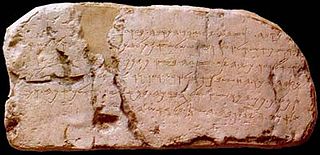
Biblical Hebrew, also called Classical Hebrew, is an archaic form of the Hebrew language, a language in the Canaanite branch of Semitic languages spoken by the Israelites in the area known as the Land of Israel, roughly west of the Jordan River and east of the Mediterranean Sea. The term "Hebrew" (ivrit) was not used for the language in the Hebrew Bible, which was referred to as שְֹפַת כְּנַעַן or יְהוּדִית, but the name was used in Ancient Greek and Mishnaic Hebrew texts.

Sumur was a Phoenician city in what is now Syria. It was a major trade center. The city has also been referred to in English publications as Simyra, Ṣimirra, Ṣumra, Sumura, Ṣimura, Zemar, and Zimyra.

The cuneiform lu sign is a common, multi-use sign, a syllabic for lu, and an alphabetic sign used for l, or u; it has many other sub-uses, as seen in the Epic of Gilgamesh over hundreds of years, and the 1350 BC Amarna letters. Its other uses show other syllabic and alphabetic forms that it can be used for: other vowels, or consonants;. There are also four sumerogrammic sub-forms for "lu" in the Epic of Gilgamesh, LU, and UDU, and DAB and DIB; LU transposes to Akkadian language, "lullû", for English language, (primitive) man; DAB transposes to ṣabātu, English for to seize, capture.
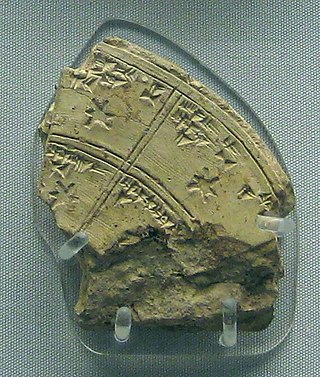
The cuneiform sign 𒀀 for a, and in the Epic of Gilgamesh the sumerogram A, Akkadian for mû, "water", which is used in the Gilgamesh flood myth, Chapter XI of the Epic, or other passages. The sign is also used extensively in the Amarna letters.

Cuneiform sign nu is a common use syllabic, or alphabetic. It is restricted to "nu", but in the Epic of Gilgamesh, or elsewhere has a Sumerogram use NU, and probably mostly for a component in personal names (PN), god's names, or specialized names for specific items that use Sumerograms.

Amarna letter EA 364, titled Justified War, is a clay tablet letter from Ayyab, ruler of Aštartu, to Pharaoh Akhenaten.
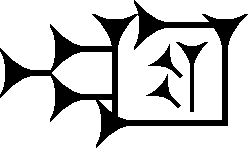
The cuneiform ud sign, also ut, and with numerous other syllabic and Sumerogram uses, is a common sign for the mid 14th-century BC Amarna letters and the Epic of Gilgamesh. The sign is constructed upon the single vertical stroke , with various positionings of two wedge-strokes at the left, sometimes approximately centered, or often inscribed upwards to the left, the second wedge-stroke, occasionally inscribed/ligatured upon the first. The wedge-strokes can have any size, are often smaller than the vertical, but as an example, Amarna letter EA 256, can be almost as large as the vertical.

Amarna letter EA 367, titled From the Pharaoh to a Vassal, is a medium-small, square clay tablet Amarna letter to Endaruta of Achshaph,, one of only about 10 letters of the el-Amarna corpus, that is from the Pharaoh of Egypt to his correspondent.
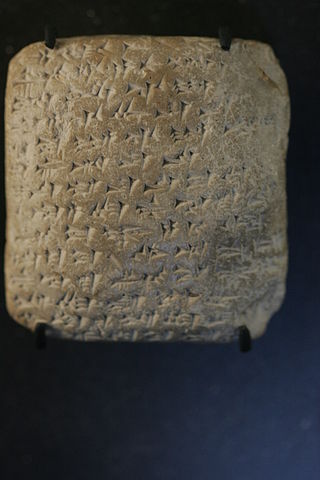
Amarna letter EA 144, titled: "Zimreddi of Sidon," is a square-shaped, mostly flat clay tablet letter written on both sides and the bottom edge. It is from a vassal state in Canaan, and is written by the 'mayor' of Sidon, the author of Amarna letter EA 144, and Amarna letter EA 145. Zimreddi is also referred to in a few other Amarna letters.

Amarna letter EA 271, titled: "The Power of the 'Apiru," is a moderately short, tallish, rectangular clay tablet letter, approximately 3 in wide x 4 in tall, from Milkilu the mayor/ruler of Gazru (Gezer), of the mid 14th century BC Amarna letters.

Amarna letter EA 270, titled: "Extortion," is an ovate-shaped, medium-sized, tall letter, approximately 3 in wide x 4 in tall, from Milkilu the mayor/ruler of Gazru (Gezer), of the mid 14th century BC Amarna letters.
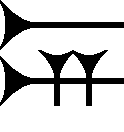
The cuneiform sign ni is a common-use sign of the Amarna letters, the Epic of Gilgamesh, and other cuneiform texts. It has a secondary sub-use in the Amarna letters for addressing the Pharaoh, from the vassal states of Canaan. The address to the Pharaoh is often 'King-Lord-Mine': LUGAL, EN-ia which has many varieties of expression. "LUGAL” is the Sumerian name for the cuneiform glyph read in the Akkadian language as "Šarru", translating as English "king", and EN is read in Akkadian as bēlu, for "Lord",. In some Amarna letters the sub-use of ni is lí, for spelling "bēlu", be-lí often .

The cuneiform ša sign is a common, multi-use sign, a syllabic for ša, and an alphabetic sign used for š, or a; it is common in both the Epic of Gilgamesh over hundreds of years, and the 1350 BC Amarna letters.
The cuneiform di sign, also de, ṭe, ṭi, and sumerograms DI and SÁ is a common-use sign of the Epic of Gilgamesh, the 1350 BC Amarna letters, and other cuneiform texts. In the Akkadian language for forming words, it can be used syllabically for: de, di, ṭe, and ṭi; also alphabetically for letters d, ṭ, e, or i. Some consonant-pairs (d/t), are also interchangeable.
References
- 1 2 Izre'el, Sh. "Canaano-Akkadian: Some Methodological Requisites for the Study of the Amarna Letters from Canaan" (PDF).
- ↑ Izre'el, Sh. (1998). Canaano-Akkadian. Lincom Europa.